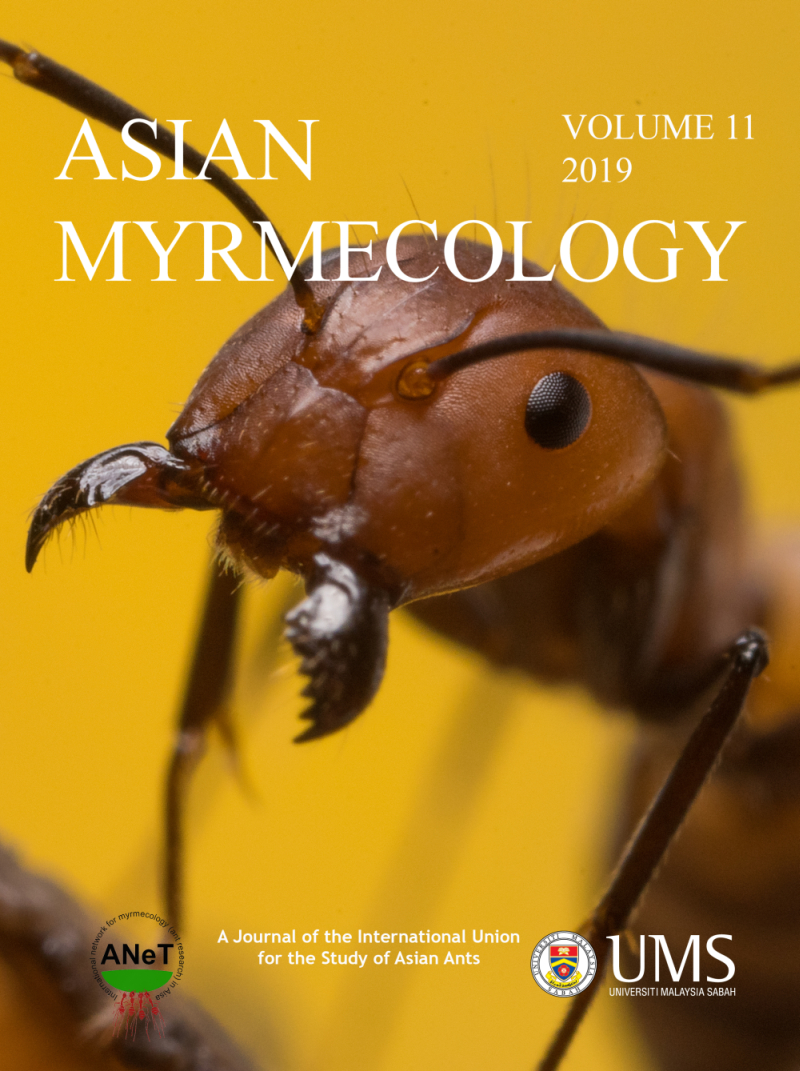ASIAN
MYRMECOLOGY
Image: François Brassard
Behaviour
DOI: 10.20362/am.009003
Asian Myrmecology 9: e009003 (1-11)
article first published online 07/May/2017
Effect of pleometrosis and brood transplantation on colony growth of the black garden ant, Lasius niger
NATALIA E. L. MADSEN* & JOACHIM OFFENBERG
Abstract:
In response to intra- and interspecific competition, ant colonies have evolved mechanisms to maximize early colony growth. Through the analysis of photographic images, this study describes the individual effect of two different strategies, pleometrosis and pupae transplantation, on the growth of Lasius niger colonies. Results showed that both methods had an overall positive effect on colony production, albeit the magnitude at which pupae transplantation boosted colony growth was much larger than pleometrosis. After six weeks, colonies with two and three queens contained, respectively, 26% and 83% more brood than control colonies with only one queen. Queen association also led to overall decreased queen fecundity and death of all resident queens in over 60% of the colonies due to queen fights. After eight weeks, colonies that received 30 or 60 foreign pupae had produced on average 256% more brood than controls and nanitic workers that were 7% longer than those from colonies that did not receive transplanted pupae.
Keywords:
pupae adoption, multiple queens, ant reproduction, colony founding, social insects, Formicidae
Get PDF (408K):
Department of Bioscience, Aarhus University, Vejlsøvej 25, DK-8600, Silkeborg, Denmark
*Corresponding author: nel@bios.au.dk



